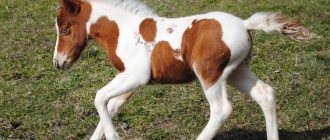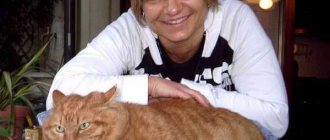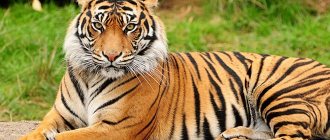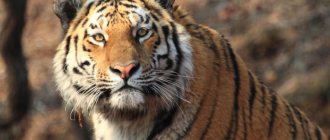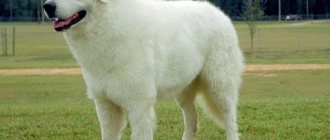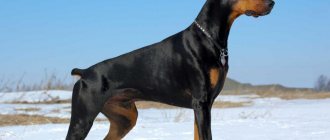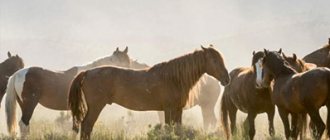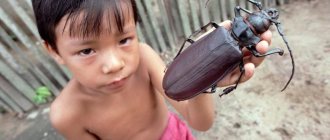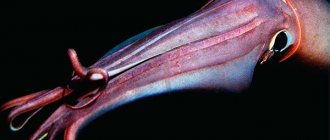Horses, incredibly beautiful and strong animals, have lived next to humans since ancient historical times. Man tamed them and began to use them to perform various functions. Horses of large breeds were used as draft power on the farm, as well as as a means of riding during military operations and knightly duels. The weak horse could not bear the medieval knight, equipped with iron chain mail, a helmet and heavy weapons. Only powerful, healthy horses could cope with such a task.
It was since the Middle Ages that the concept of knightly war horses - destrie - appeared. Many of the largest horses in the world have their origins in distrie from knightly fights. Horses of modern breeds: Percherons, Shires, Brabançons - can be considered relatives of the trotters of the Middle Ages. The trotters weighed up to a ton and were about two meters tall. Their descendants are worthy of their distant relatives in many respects.
French Percherons are not only strong and powerful racehorses, but also graceful. It is believed that their average height is about 1.80 m. These are heavyweight horses. They are used for moving heavy objects and for equestrian dressage.
English Shires are slow, but have great endurance. They are capable of moving loads up to five times their own weight. Their height is approximately 1.70 m, weight - 1200 kg. But among the Shires there are also giants, reaching and exceeding a two-meter height.
Belgian Brabançons, up to 1.70 m high, also have exceptional record-breaking relatives. A larger type of breed was obtained as a result of the merger of two breeds (Flemish and Ardennes). The horse of the updated breed turned out to be exceptionally strong and hardy, not afraid of heavy loads.
The Russian draft horse breed is not inferior to other large horses either in size or endurance. At the end of the 19th – beginning of the 20th centuries, to obtain such a heavyweight, it was necessary to cross breeds: Ardennes, Percheron and Brabançon. The result is a beautiful horse with high-quality trotter characteristics. Weight can reach one ton, height – 1.70 m. The largest representatives of these breeds are presented in the rating.
Digger (height 1.96 m)
The Scottish giant stallion Digger weighs 1200 kg and is 1.96 m tall. He ranks 7th in the ranking of the largest horses. He feels good if he eats 25 kg of hay per day and drinks about 100 liters of water. When Digger was 4 years old, his owner changed. His rapid growth, at which time he had already grown to 1.96 m, and his healthy appetite seriously frightened the former owner, and he decided to transfer the horse to another owner. The huge horse was accepted into the cavalry regiment of the Queen of England. But life was difficult for him in London, and now he has returned to the Scottish expanses.
Soviet heavy truck
Soviet heavy trucks are large and massive horses, capable of easily moving multi-ton loads. The breed was bred during Soviet times on the basis of Belgian Brabançons. The goal of the breeders was to create a powerful and hardy breed. The breed was officially approved in 1952. The horses weigh about a ton.
Breed characteristics:
- Height – up to 170 cm.
- Suit . Red, red-roan, bay, bay-roan.
- Exterior. The head is medium, proportionally folded. The ears are straight, less often drooping. Massive and wide chest. The neck is powerful and muscular. Wide and level lumbar part, the croup is forked, slightly sagging. The legs are strong and muscular. A lush mane and an equally lush tail.
- Usage. Walks under saddle. Agricultural work, cargo transportation. Participation in competitions. In terms of traction qualities they can replace a tractor. They move loads that are too heavy for other breeds of horses. Ideal for large agricultural production and farms.
Representatives of the breeds have incorrectly placed legs, but this defect does not affect the quality of the horses. The character of Soviet heavy trucks is friendly, they are very energetic and efficient.
The breed is characterized by rapid growth and early maturity. At 2.5 years old, the horse can be used for heavy work. Unpretentious to feed. They have the ability to reproduce for a long time - mares can have foals even after 20 years.
Brooklyn Supreme (height 1.98 m)
The huge stallion Brooklyn Supreme ranks 10th among the largest stallions. He lived for twenty years, his weight reached 1450 kg, his height was 1.98 m. The horseshoes for such a giant Brabançon weighed 3.5 kg, 5 times more than an ordinary medium-sized horseshoe.
Brooklyn lived in Belgium before World War II. It was very popular among the population and was demonstrated at exhibitions and fairs. The Brabançon breed is famous for its impressive size and high market value.
Shires
These are draft heavy trucks of English origin. They trace their ancestry back to knightly horses, and those – from the descendants of the horses of the Roman conquerors. The exact origin of the breed is unknown. But it is assumed that the Shires were obtained by crossing local English breeds with the Flemish and Friesian breeds. Shires are the largest horses on the planet. Their weight reaches 800-1220 kg. There are specimens weighing up to one and a half tons. Breed Features:
- Height – 170-190 cm. There have been cases when the height of representatives of the breed reached 2 m.
- Suit . Shires can be black, bay, karak, gray.
- Exterior. The body is powerful and proportional. Wide and strong back. Long and muscular croup. The skull is massive, the forehead is wide. Ears are sharp. The fluffy tail is set high. The legs are powerful. The hooves are strong and large. Friezes at the bottom of the legs. A distinctive feature is a bald spot on the head and “stockings” on the hind legs.
- Usage. Today they are rarely used in agricultural work. More often they can be seen at exhibitions and various horse breeding events.
Shires are distinguished by their balanced and calm character. Easily manageable and trainable. They are slow but strong. At 3 years old, a Shire is capable of moving a load five times its weight - that is, 5000-6000 kg.
Cracker (height 1.98 m)
A stallion from England named “Cracker” is a popular television star. He is a true gentleman - friendly, obedient, calm. Its height is 1.98 m. A miniature housewife can only climb onto it by standing on a stepladder. Its weight is 1200 kg. The animal absorbs 130 liters of water per day, happily eats carrots and hay, and loves sugar. The owners believe that this diet helps him maintain good shape.
The largest breeds
Arden (152-163 cm)
The Ardennes are the oldest breed of horse. Its homeland is the mountainous regions of the Ardennes, located on the border of Belgium and France. Horses were needed here to move heavy loads along mountain roads.
A strong, short horse - and the height of the Ardens does not exceed 160 cm - was ideal for this mission. The Ardens even had to take part in Napoleonic wars - they had to transport large guns.
It is believed that the Ardenes descended from the ancient Solutre breed, which lived in Europe about 50 thousand years ago. The history of the Ardennes breed begins in the 19th century. Then their height reached 140 cm. These horses are small compared to other heavy draft horses, therefore they are known as “small draft horses”.
During the Napoleonic Wars, Ardennes began to be crossed with Arabian horses to increase the endurance of the latter.
It was the Ardennes breed that was used to breed the famous Russian heavy trucks. In 1900, during the next exhibition of breeds held in Paris, the latter were presented as “Russian Ardennes”.
Description of the breed:
- Height – 152-163 cm.
- Color : bay, red or dark red, roan.
- Exterior. The head is large, with a low forehead and large expressive eyes. Pointy ears. The neck is arched, the shoulders are strong. The profile is smooth. The body is compact and massive. The legs are short, strong, covered with thick brushes.
- Usage. Workhorse. Obtaining horse meat.
Brabançon (700-1000 kg)
Brabançons are Belgian horses that are considered the strongest heavy draft horses. Today they are the calling card of Belgium. Brabançons can transport very large loads over long distances.
Their weight is 700-1000 kg. The breed was obtained by crossing the Ardennes with the Flemings. Brabançons look powerful, but elegant.
Description of the breed:
- Height – 156-168 cm. This is a small figure. But high growth in horses is achieved due to the length of their legs, and this is unimportant for heavyweights. These horses carry, not gallop.
- Suit . There are no strict standards, but Brabançons are predominantly found in light bay and red colors, less often in gray and black.
- Exterior. Powerful body with massive bones and a wide chest. They have a croup that is traditional for heavy trucks - wide, rounded and forked. The back and lumbar region are short - the main power comes from the front of the body. There is no sagging of the back, characteristic of heavy trucks. The legs are strong, with voluminous joints and wrists, the hooves are covered with brushes. The neck is powerful, short, the profile is rounded. The head appears small, the forehead is well developed, and has a small hump on it.
- Usage. Performing heavy physical work. Used as a “tractor”.
Percheron (150 cm, 500 kg)
Percherons are the most popular French horse breed. There is no exact information about its origin. But there is an assumption that their homeland is the Norman province of Perche.
The exact time of appearance is unknown. Perhaps the ancestors of the Percherons were ancient French horses. The latter are described as bay horses of medium size, strong and efficient. But the first mention of Percherons appears only at the dawn of the 19th century.
Previously, Percherons were knight's horses, then they began to be used as draft horses. There were different types of Percherons - heavy ones were used in cities, light ones - for army needs. Horse weight – from 500 kg. Now the breed is extremely popular; private breeders are engaged in them in France.
- Height – 150 cm.
- Suit . Gray and black, less often – roan and red.
- Exterior. They have a very expressive and recognizable appearance. Small, beautifully shaped head. Wide forehead, slightly bulging eyes. Ears are sharp. The muscular neck is beautifully arched. The mane is thick, the tail is fluffy. The croup is long enough. Body with a wide and deep chest. Powerful legs.
- Usage. Previously, they were used on hunting trips and in military operations - as draft force. Small Percherons are used today under saddle and for fast riding, large Percherons are used for agricultural work and for transporting goods in eco-zones.
Vladimir heavy truck (175 cm, 800 kg)
The breed was developed by crossing Russian breeds with Clydesdales and Shires. This is the most massive and strong domestic breed. The Vladimir heavy truck can trot for a long time, moving colossal loads. Weight is about 800 kg, and chest circumference is more than 2 m.
Breed characteristics:
- Height – 166-162 cm, maximum – 175 cm.
- Suit . The predominant breed is bay and red, less often – brown and black.
- Exterior. The head is massive, convex. The neck is long and full. The body is wide. The legs are long, with well-developed muscles. At the bottom of the legs there are white “stockings”.
- Usage. This breed is universal, it can be used for almost any need - under saddle, in harness, for transporting goods, for agricultural work, for hunting. They look beautiful in harness - today Vladimir heavy trucks are actively used at celebrations and festivals.
Russian heavy truck (150 cm, 700 kg)
The breed traces its ancestry back to the 19th century. Bred from the Belgian Ardennes and French Percherons. For a long time they were called “Russian Ardennes”. In small Ardennes, breeders were attracted by unpretentiousness and mobility, in Percherons - by power and size.
The main difference between the Russian draft horse and other heavy draft breeds is its small size. The harness type of physique is clearly expressed. The weight of stallions reaches 700 kg.
Specifications:
- Height – 150 cm.
- Suit . More often - red, brown. Less often - bay, roan, black.
- Exterior. Long and massive body. The legs are strong and sinewy. Below there is a small overgrowth. The croup is powerful, muscular, the neck is massive and beautifully curved. The head is small, broad-browed. Small erect ears. Wide, barrel-shaped chest. The tail and mane are thick.
- Usage. In rural life, the Russian heavy truck replaces a small tractor.
The breed is distinguished by its endurance at the walk and at the trot. Horses have an easy-going and balanced disposition. Active and curious. These horses are obedient in harness.
They are tireless workers and are considered ideal workers. They easily adapt to harsh climates, new places and owners. They are good companions by nature.
Soviet heavy truck (170 cm)
Soviet heavy trucks are large and massive horses, capable of easily moving multi-ton loads. The breed was bred during Soviet times on the basis of Belgian Brabançons.
The goal of the breeders was to create a powerful and hardy breed. The breed was officially approved in 1952. The horses weigh about a ton.
Breed characteristics:
- Height – up to 170 cm.
- Suit . Red, red-roan, bay, bay-roan.
- Exterior. The head is medium, proportionally folded. The ears are straight, less often drooping. Massive and wide chest. The neck is powerful and muscular. Wide and level lumbar part, the croup is forked, slightly sagging. The legs are strong and muscular. A lush mane and an equally lush tail.
- Usage. Walks under saddle. Agricultural work, cargo transportation. Participation in competitions. In terms of traction qualities they can replace a tractor. They move loads that are too heavy for other breeds of horses. Ideal for large agricultural production and farms.
Shires (up to 190 cm, 800-1200 kg)
These are draft heavy trucks of English origin. They trace their ancestry back to knightly horses, and those – from the descendants of the horses of the Roman conquerors. The exact origin of the breed is unknown.
But it is assumed that the Shires were obtained by crossing local English breeds with the Flemish and Friesian breeds. Shires are the largest horses on the planet. Their weight reaches 800-1220 kg. There are specimens weighing up to one and a half tons. Breed Features:
- Height – 170-190 cm. There have been cases when the height of representatives of the breed reached 2 m.
- Suit . Shires can be black, bay, karak, gray.
- Exterior. The body is powerful and proportional. Wide and strong back. Long and muscular croup. The skull is massive, the forehead is wide. Ears are sharp. The fluffy tail is set high. The legs are powerful. The hooves are strong and large. Friezes at the bottom of the legs. A distinctive feature is a bald spot on the head and “stockings” on the hind legs.
- Usage. Today they are rarely used in agricultural work. More often they can be seen at exhibitions and various horse breeding events.
Scottish Clydesdale (163-173 cm, up to 900 kg)
The birthplace of the breed is Scotland. The breed was named after the valley of the Klade River. This area has long been home to powerful horses. The first mention of the breed dates back to the beginning of the 18th century.
The breed was created by crossing Flemings and local Scottish mares. Horses weigh 800-900 kg. Individual specimens weigh 1 ton.
Characteristics of Scottish Clydesdales:
- Height – 163-173 cm.
- Suit . Black, bay, roan, gray.
- Exterior. Large and powerful body. Large head with a straight profile, wide forehead. Large nostrils, large and expressive eyes. The neck is long and muscular, beautifully arched. Long and wide chest. The body is somewhat shortened - the back is wide and short. Muscular croup. Long powerful legs. Wide hooves. At the bottom of the legs there are brushes. The breed is characterized by the presence of white markings - they are found on the face and legs.
- Usage. Agricultural work. Celebrations, ceremonies.
Noddy (height 2.05 m)
Australian draft horse Nordrem Lascombe is in 8th place among the largest horses. Noddy's height is 2.05 m, weight is 1300 kg. He is from the Shire breed and is similar in size to Edward’s grandfather, the English record holder. This breed now numbers about 2 thousand individuals in the world. It is quite expensive to maintain such a large horse. Therefore, the owner involves her pet in working on the farm.
Vladimir heavy truck
The breed was developed by crossing Russian breeds with Clydesdales and Shires. This is the most massive and strong domestic breed. The Vladimir heavy truck can trot for a long time, moving colossal loads. Weight is about 800 kg, and chest circumference is more than 2 m.
Breed characteristics:
- Height – 166-162 cm, maximum – 175 cm.
- Suit . The predominant breed is bay and red, less often – brown and black.
- Exterior. The head is massive, convex. The neck is long and full. The body is wide. The legs are long, with well-developed muscles. At the bottom of the legs there are white “stockings”.
- Usage. This breed is universal, it can be used for almost any need - under saddle, in harness, for transporting goods, for agricultural work, for hunting. They look beautiful in harness - today Vladimir heavy trucks are actively used at celebrations and festivals.
Despite its impressive size, the Vladimir heavy truck is not a slow-moving horse - it is capable of running briskly with a load of 1.5 tons. The breed has a calm and easy-going disposition. Horses are obedient in harness. Very hardworking and diligent. Temper is only shown when treated poorly. They quickly adapt to new living and working conditions.
Duke (height 2.07 m)
Gelding Duke from Great Britain is in 6th place in the ranking of large horses in the world. The giant has already reached a height of 2.07 m and continues to grow further. The horse weighs 1310 kg. The owner of the horse is sure that he grows so well thanks to her herbal infusions and unusual apples, which he loves very much. They gave Duke a herbal infusion when he got sick. The gelding began to recover and began to grow faster. Perhaps in the future Duke will become the new height record holder.
The animal eats 10 kg of hay and grain crops per day, about a hundred liters of water and herbal infusion (20 liters). Duke is a calm and friendly animal, treats other horses well. The only thing that worries him is rodents. He's afraid of them.
Percheron
Percherons are the most popular French horse breed. There is no exact information about its origin. But there is an assumption that their homeland is the Norman province of Perche. The exact time of appearance is unknown. Perhaps the ancestors of the Percherons were ancient French horses. The latter are described as bay horses of medium size, strong and efficient. But the first mention of Percherons appears only at the dawn of the 19th century.
Previously, Percherons were knight's horses, then they began to be used as draft horses. There were different types of Percherons - heavy ones were used in cities, light ones - for army needs. Horse weight – from 500 kg. Now the breed is extremely popular; private breeders are engaged in them in France.
- Height – 150 cm.
- Suit . Gray and black, less often – roan and red.
- Exterior. They have a very expressive and recognizable appearance. Small, beautifully shaped head. Wide forehead, slightly bulging eyes. Ears are sharp. The muscular neck is beautifully arched. The mane is thick, the tail is fluffy. The croup is long enough. Body with a wide and deep chest. Powerful legs.
- Usage. Previously, they were used on hunting trips and in military operations - as draft force. Small Percherons are used today under saddle and for fast riding, large Percherons are used for agricultural work and for transporting goods in eco-zones.
The Percheron will effortlessly, without losing the grace of its movements, run 60 km with a rider on its back. A distinctive feature of Percherons is their even stride under the saddle and in harness.
Percherons are extremely smart, kind and flexible. They are calm and balanced, patient and well trained. Despite their size, they are distinguished by their mobility and energy.
Doctor Le Ger (height 2.13 m)
A French Percheron colt nicknamed "Doctor Le Ger" was born in 1902. As an adult, its weight was in no way inferior to an average car - 1400 kg. In height, the giant grew to 2.13 m. He became a record holder among Percherons, whose average height does not exceed 1.80 m. Horses of this breed are used as heavy draft horses, as well as for horseback riding. They have a very soft ride. Le Gers is in the middle of the ranking of the largest and heaviest horses.
Arden
The Ardennes are the oldest breed of horse. Its homeland is the mountainous regions of the Ardennes, located on the border of Belgium and France. Horses were needed here to move heavy loads along mountain roads. A strong, short horse - and the height of the Ardens does not exceed 160 cm - was ideal for this mission. The Ardens even had to take part in Napoleonic wars - they had to transport large guns.
It is believed that the Ardenes descended from the ancient Solutre breed, which lived in Europe about 50 thousand years ago. The history of the Ardennes breed begins in the 19th century. Then their height reached 140 cm. These horses are small compared to other heavy draft horses, therefore they are known as “small draft horses”.
During the Napoleonic Wars, Ardennes began to be crossed with Arabian horses to increase the endurance of the latter. It was the Ardennes breed that was used to breed the famous Russian heavy trucks. In 1900, during the next exhibition of breeds held in Paris, the latter were presented as “Russian Ardennes”.
Description of the breed:
- Height – 152-163 cm.
- Color : bay, red or dark red, roan.
- Exterior. The head is large, with a low forehead and large expressive eyes. Pointy ears. The neck is arched, the shoulders are strong. The profile is smooth. The body is compact and massive. The legs are short, strong, covered with thick brushes.
- Usage. Workhorse. Obtaining horse meat.
Big Jake (height 2.17 m)
Big Jake the horse, who lives in the American state of Michigan, was honored to be included in the Guinness Book of Records. After all, this is the heaviest horse living in the modern world. In our ranking of the largest horses in the world, it ranks third. At 11 years old, Big Jake has grown to 2.17 m and weighs about 2400 kg, which is comparable to the weight of an all-terrain vehicle.
From a young age, the horse was wild and unbridled, and it happened that the owner got it too. A pen of 36 sq.m. was built for him. The giant eventually calmed down and became a participant in various talk shows. It’s touching that he has to perform in a pair with the tiny horse Einstein. They get along well with each other and attract thousands of spectators at their performances. Despite his enormous size, Big Jake is graceful and artistic.
Scottish Clydesdale
The birthplace of the breed is Scotland. The breed was named after the valley of the Klade River. This area has long been home to powerful horses. The first mention of the breed dates back to the beginning of the 18th century. The breed was created by crossing Flemings and local Scottish mares. Horses weigh 800-900 kg. Individual specimens weigh 1 ton.
Characteristics of Scottish Clydesdales:
- Height – 163-173 cm.
- Suit . Black, bay, roan, gray.
- Exterior. Large and powerful body. Large head with a straight profile, wide forehead. Large nostrils, large and expressive eyes. The neck is long and muscular, beautifully arched. Long and wide chest. The body is somewhat shortened - the back is wide and short. Muscular croup. Long powerful legs. Wide hooves. At the bottom of the legs there are brushes. The breed is characterized by the presence of white markings - they are found on the face and legs.
- Usage. Agricultural work. Celebrations, ceremonies.
Clydesdales are distinguished by their flexible and good-natured disposition. They are even a little phlegmatic. Intelligent and obedient, energetic and active. They are distinguished by their endurance, unpretentiousness, high load capacity, and the ability to adapt to any climate. Previously, they were widely used to transport stagecoaches.
Po (height 2.20 m)
The gelding "Poe", named after the American science fiction writer and mystic, is currently one of the largest horses in the world. Its height from ears to ground is 2.20 m, body weight is about 1500 kg. During the day he eats two bales of hay, five kilograms of grain and drinks about eighty liters of water. The appetite is good, the horse is healthy and in excellent shape.
Distinctive characteristics of large horses
Horses with the highest weight and height are representatives of draft breeds. The main purpose of such horses was to pull or carry heavy loads.
These are powerful, strong animals, which are characterized by:
- wide strong bones;
- large muscle mass;
- high growth;
- strong legs with wide hooves;
- increased body weight.
Most breeds have a large head, a wide chest and back, and a powerful rump. Exterior features of horses vary, but for the heavy-duty category they are not of fundamental importance.
Great Sampson (height 2.20 m)
The winner of our top list of the largest horses in the world is the English stallion Great Sampson. The giant horse weighed about 1520 kg, was 2.20 m high. He belonged to the Shire breed and had another name - Mammoth. He lived in the 19th century. Sampson has been dead for a long time, but his record size makes him a favorite in the ranking of the very best. At the age of 4 years, it was the most powerful and huge animal of the equine family.
Animals Nature
Russian heavy truck
The breed traces its ancestry back to the 19th century. Bred from the Belgian Ardennes and French Percherons. For a long time they were called “Russian Ardennes”. In small Ardennes, breeders were attracted by unpretentiousness and mobility, in Percherons - by power and size.
The main difference between the Russian draft horse and other heavy draft breeds is its small size. The harness type of physique is clearly expressed. The weight of stallions reaches 700 kg.
Specifications:
- Height – 150 cm.
- Suit . More often - red, brown. Less often - bay, roan, black.
- Exterior. Long and massive body. The legs are strong and sinewy. Below there is a small overgrowth. The croup is powerful, muscular, the neck is massive and beautifully curved. The head is small, broad-browed. Small erect ears. Wide, barrel-shaped chest. The tail and mane are thick.
- Usage. In rural life, the Russian heavy truck replaces a small tractor.
The breed is distinguished by its endurance at the walk and at the trot. Horses have an easy-going and balanced disposition. Active and curious. These horses are obedient in harness. They are tireless workers and are considered ideal workers. They easily adapt to harsh climates, new places and owners. They are good companions by nature.
From the history
It is believed that modern breeds of draft horses come from the medieval knightly war horse. Imagine warriors clad in armor. The weight of the armor reached 35 kilograms, and the knight himself also weighed something. In total, the horse had to carry about a hundred kilograms, or even more, of weight. And add to this the armor in which the war horses themselves were dressed. In all this, the horse had to gallop and sometimes perform quite complex maneuvers, since knightly equestrian combat requires coordinated actions of the rider and horse.
Such horses were called “heavy horse destrie” - “right, right-handed” (from the Latin “dextarius”), probably due to the fact that the knight always had a squire on his right, who would pick up the bridle if necessary. These horses, whose ancestors were heavy trucks from the time of the Great Migration of Peoples, were not very hardy and not too playful. It was impossible to overcome obstacles like fences or ditches on them; the destriers did not like to jump. But these horses were distinguished by great power, and in battle, clad in armor and carrying a knight in armor, they were like tanks. Not a single infantry could withstand the knights sitting on the destrie.
Destrie heavy truck
It was from these beautiful animals that the strongest modern horses originated.
How to find out a horse's weight if you don't have a scale
If you have scales, the performance of a particular horse can be determined with an accuracy of a gram, but the problem is that it is not always possible to use such large scales (mostly automobile ones). It is for such cases that the following methods are provided for approximate calculation of the weight characteristics of a horse.
Did you know? The Masai tribe believed that a person killed by a horse (or any other hoofed animal) should automatically go to heaven.
Special tape
This device is in many ways reminiscent of an ordinary measuring tape, only it is marked with gradations in kilograms, thanks to which you can immediately find out the weight of the animal. There are tapes designed specifically for specific breeds, juveniles, ponies, mares and stallions, so when purchasing one you should know exactly what you are measuring. If you believe the manufacturers, then correct measurement using high-quality tape allows you to find out more or less accurate figures, with an error of up to 10–20 kg in any direction.
Important! This measurement method is not suitable for exhausted or overly large horses. In addition, the correct calculation of live weight will be influenced by the external situation.
It is advisable to take measurements on a level surface, in good lighting and always with an assistant. Don’t forget also about the animal’s fur, because thick hair will significantly distort the results.
According to Motorin's formula
This world-famous formula involves calculating the weight of absolutely any horse by finding the value of six times the chest girth and further subtracting 620:
Y =6*V – 620
In this case, Y is the horse's mass in kg, and V is the circumference of its chest, expressed in centimeters. This formula is used by both owners of small stables and representatives of entire equestrian enterprises, so we can assume a high level of information content of the Motorin method.
Brabançon - Belgian representative
Belgian heavy trucks, Brabançons, are extremely popular in America, weighing from 700 kg to a ton with a height of almost a meter.
These are some of the most powerful “living tractors”. The Ardennes are also a very large breed (representatives of the Ardennes mountainous regions located on the border of France and Belgium), used by the French army of Napoleon and during the First World War. The most graceful and beautiful among the heavy trucks are the Percherons - French heavyweights. The breed contains a considerable amount of Arabian blood, which has been instilled in them for quite a long time. Such horses became very popular and were used both for military purposes and for agricultural work. The famous representative of his breed was the stallion Jean de Blanc, who amazed the inhabitants of the 19th century with his size.
The largest horse in the world (1928-1948), about which reliable data has been preserved, is Brookie, a Belgian Percheron. Its height at the withers reached 198 centimeters, and its weight was 1.5 tons.
Condition levels
These parameters are also important. After all, with their help, they determine the conditions or conditions that horses for various purposes must meet.
- Exhibition - this is excellent fatness. An animal of this group has rounded shapes and shiny fur.
- Factory - good fatness. Such mares and stallions have the highest sexual activity.
- Training or working – satisfactory fatness. These horses do not have excess fat deposits between the muscles, which often interfere with the normal performance of the horse.
- Poor body condition is mainly a consequence of poor maintenance and feeding, exhaustion, illness or old age.
And from the classical division of the herd that follows from this, economic directions of horse breeding are formed. Let's take a closer look at which categories of horses are distinguished by experts according to the degree of fatness.
Exhibition
Individuals of this condition are distinguished by a beautiful proportional physique, relief of muscle mass and shiny coat. The effect of elegance is provided by small layers of subcutaneous fat, giving their shapes smoothness and smoothness. Such horses require a limited period of fattening, which is planned before exhibitions.
Important! Pathologies of the oral cavity, including teeth, as well as helminthic infestations lead to a decrease in horse weight with good nutrition. The development of the disease is indicated by a decrease in appetite or complete refusal of food and bad breath
Factory
Horses with good fatness, a beautiful muscular body and high sexual activity are selected for productive purposes. They do not have excess fat, but there are small deposits on the flanks and rump. This category retains excellent working and reproductive characteristics.
This group includes animals that are characterized by very developed muscles and a complete absence of fat. They are great for equestrian sports. However, the ones listed are enough to get good results in short-distance running. To successfully overcome long distances, the mare’s endurance is also required, which is determined by the characteristics of the breed.
Poor nutritional status
Unsatisfactory fatness is indicated by sunken sides, prominent hips, ribs and ischial tuberosities. These are clear signs of mild exhaustion. They are observed when zoological norms for feeding horses are violated.
Did you know? In Hinduism, the horse is associated with the cosmos, and white horses are revered as the last incarnation of the god Vishnu.
Animals of this category can often be seen on horse farms that specialize in meat production.
Individual record holders
Selection aimed at creating powerful and hardy horses has led to the emergence of real giants. Many heavy-duty giants went down in history as unique examples of breeding work, and their names became known throughout the world.
Big Jake
The Belgian gelding Big Jake gained fame as the largest horse in the world. Today he holds the palm in the ranking of giant horses. Big Jake is listed in the Guinness Book of Records. His height is 2 m 17 cm. His weight is the same as that of a large jeep - 2600 kg. Just incredible numbers. A big participant in all kinds of performances. Speaking on the Ronald McDonald House talk show, Big “gives” all the money he earns to charity.
To maintain his excellent shape, the gelding eats a couple of bales of straw and 5 kg of oats every day. And in order not to feel thirsty, he needs 30 buckets of water every day.
Noddy
Noddy is a Shire horse. Lives in Australia. His weight is 1300 kg and his height is 205 cm. Today Noddy is considered the tallest horse. He inherited his massive build from his ancestor. Noddy's grandfather, Edward, lived in England, and at one time also led the growth ranking. To pay for his expensive upkeep, Noddy has to work on the farm of his owner D. Greenman.
Digger
Digger is a member of the Royal Horse Guards. People here are used to large horses, but Digger caused a real sensation with his appearance in 2012. This Clydesdale is the largest horse in the guard. This giant is 220 cm tall. Every day he needs 25 kg of hay and 95 liters of water. Digger's weight is 1200 kg. The horse has already entered the Guinness Book of Records, but its growth continues.
Cracker
Cracker represents the English Sheirs. This giant reaches a height of 198 cm and weighs 1200 kg. Every day the giant eats two bales of hay and 4-5 kg of grain. The drinking rate is up to 13 buckets per day. The horse often appears on television - he is a popular personality in England.
Duke
Duke lives in the UK. The height of this gelding is 207 cm. But the horse continues to grow. It is quite possible that Duke will be able to break the record and become the tallest horse in the world. Duke eats in a special way, which is why he grows by leaps and bounds. The hostess gives him special herbal infusions and feeds him apples. The giant eats plenty of grain and hay, washing it down not only with water, but also with 20 liters of herbal tea. Although Duke is a giant, he is shy and terribly afraid of mice.
Brooklyn Supreme
Brooklyn Supreme was a Belgian Brabançon who lived in the mid-20th century (1928-1948). It belonged to a certain S.G. Goode (Ogden, Iowa). This stallion lived and died in the USA, in the state of Iowa. At the age of 10 years, the giant reached a weight of 1450 kg, and his height at the withers was 198 cm. The horse had huge hooves, the total weight of his horseshoes was 13 kg. An ordinary horseshoe weighs 700 g, Brooklyn horseshoes weighed 3.5 kg. The color of this giant stallion is bay-roan. Chest volume – 259 cm.
Samson
Samson (Sampson), a Shire stallion, is considered the record holder among heavy-duty giants. He lived in the 19th century. His height was recorded - 220 cm. Weight - 1520 kg. Year of birth – 1846. His homeland is the English town of Toddington Mills (Bedfordshire County).
Samson's owner was a certain Thomas Cleaver. He received the status of the largest and most powerful horse at the age of 4. And not only in England, but all over the world. Due to its colossal size, they decided to call it Mammoth. Samson’s record has not yet been broken, and the size of the record holder can be estimated from the few photographs that have survived to this day.
Morocco
Morocco is a Percheron that was once the largest horse. Little information has been preserved about Morocco. It is known that his height was 215 cm, and the horse weighed approximately 1300 kg. You can judge the dimensions of Morocco from a photograph that has survived to this day.
Copy of a newspaper clipping (pictured is the horse Morocco with his owner)
Dr. Le Ger
This magnificent Percheron was born back in 1902. The stallion reached a height of 2 m 13 cm. Its weight is comparable to the weight of a car - 1400 kg. This is the largest horse in the entire history of French horse breeding. None of the Percherons could come close to Dr. Le Gers' record.
This illustration was produced as wall posters and postcards
The functions of horses have changed from century to century, but they have always remained excellent companions for humans. Today, heavy trucks are not only faithful helpers and friends of man, but also a real decoration of the surrounding world, requiring care and attention.
Let's say you test your horse's cortisol levels and they are normal.
You believe that for this reason stress is not an issue. But this may lead to false conclusions. Cortisol levels may actually increase within the cell rather than in the bloodstream due to the oversynthesis of an enzyme called 11-beta-hydroxysteroid dehydrogenase-1, which is found in fat, liver and brain cells and converts inactive cortisol into active one. (Editor's note: This means that fat can produce its own cortisol!)
These processes have been observed in several animal species, including horses, and lead to a vicious cycle that results in damage to the hypothalamus.
Photo gallery
We invite you to take a closer look at the representatives of the largest breeds in photos and videos.
Great Samson
Clydesdale in harness
Giant Duke
Record holder Po
